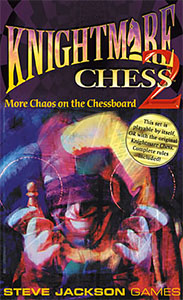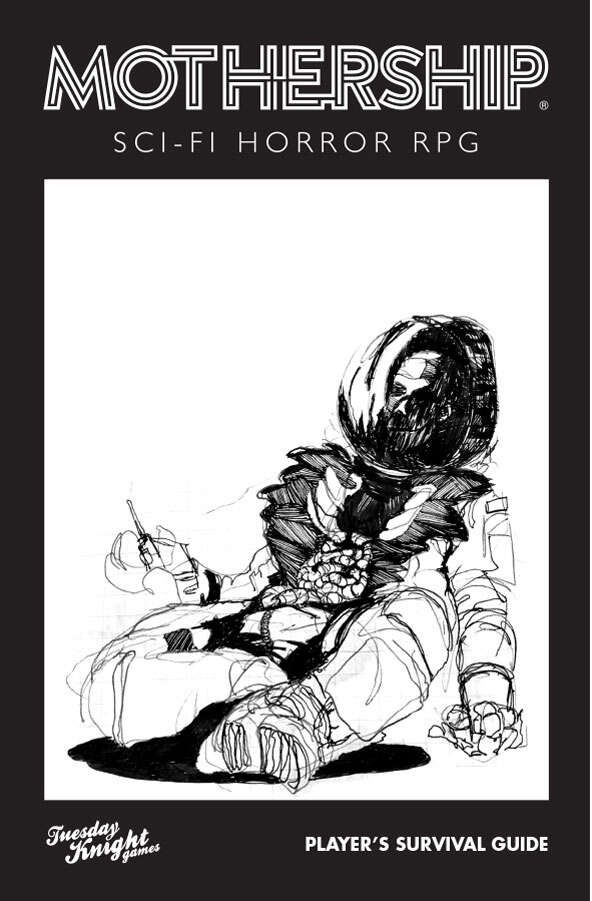’tis the Halloween season! The perfect time for a little horror gaming! But how can you scare your players when you don’t have a camera, a composer, a symphony orchestra, a foley artist, and professional actors? Join ENNIE Award-winning game designer Justin Alexander for a peek inside RPG jump scares… with a twist!
Advanced Gamemastery: Jump Scares with a Twist
The Vladaam Affair – Part 16B: Vladaam Slave Ship – Pride of Morrain
The Pride of Morrain is named after a former scion of House Vladaam. Morrain was arrested for piracy during the War of Black Sails, escaped from the gallows in Trolone, and returned to Ptolus before being killed by Freeport assassins (who had been sent by a powerful pirate captain whose daughter Morrain had raped and murdered).
The prow of the ship is fashioned to resemble the head of a red dragon. The crew of the ship will tell tales of how the cunningly crafted wooden head contains the mummified heart of a dragon slain by Morrain himself. It’s possible that many or all of them actually believe this tale, but it’s not true.
CAPTAIN BOASTIA: Use stats for pirate captain (MM 2024, p. 242).
SHIP’S MAP: The map of the Pride of Morrain is based on the Duskbringer battlemap published by Elven Tower. The original map can be found here, but the version seen above has been heavily modified. Patrons of the Alexandrian have exclusive access to a high-resolution version of the modified map, suitable for printing or VTTs.
AREA 1 – THE WHEEL
The brass wheel of the ship has a plaque attached to it, explaining that it was taken from the original Pride of Morrain and was wielded by the hand of Prince Morrain during the War of Black Sails.
AREA 2 – MAIN DECK
At first glance, a fairly typical ship’s deck.
AFT DOOR: The aft door, leading below decks, is surprisingly sturdy and can be secured with two locks and a bar from the outside. (This is a final defensive measure against the potential of slave uprising.)
- AC 19, 40 hp, DC 18 Dexterity (Thieves’ Tools)
CARGO HATCH: Similarly, the cargo hatch is secured with a pair of hefty padlocks.
- AC 19, 7 hp, DC 18 Dexterity (Thieves’ Tools)
AREA 3 – BALLISTAS
The upper deck ballistas are mounted on swivels.
SEARCH — DC 10 Wisdom (Perception): 6 of the bolts at each ballista tipped with alchemist’s fire.
- DC 14 Intelligence (Wisdom): To find a slip of paper under the alchemist’s fire bolts at the prow of the ship billing for various supplies which were delivered to an address on Wayfarer’s Street. (This address belongs to Alchemical Lab — Shadowworks, which created the fire bolts.)
ALCHEMIST’S FIRE BOLTS: 3d10 piercing damage. Target takes 1d10 fire damage at the start of each of their turns.
AREA 4 – GRAPPLER BALLISTA
The lower ballista is secreted within the open mouth of the ship’s red dragon prow. The bolts shot by this ballista are tethered and a powerful, steam-powered mechanism under the deck can be used to drag pinioned ships into boarding range.
AREA 5 – SUPPLIES & ARMORY
In addition to hard tack, barrels of water, rope, and other necessary supplies, this room contains an unusual number of weapons:
- scimitars & dragon pistols (Ptolus, p. 522), enough to arm the sailors
- dragon rifles (Ptolus, p. 522) to arm the Advanced Vladaam Guards
STAIR DOORS: The doors at the bottom of the stairs are steel-cored and securely locked.
- AC 19, 40 hp, DC 18 Dexterity (Thieves’ Tools)
AREA 6 – WATER PURIFIER
A technomantic device in this compartment siphons ocean water and purifies it for human consumption… but only imperfectly. The result is potable, but still has a slightly salty and unpleasant aftertaste. It’s good enough for the slaves, though.
SIGIL: The device is marked with the Vladaam alchemy sigil:

AREA 7 – UPPER HOLD
The upper hold generally contains mundane cargo.
CARGO HATCHES: Cargo hatches lead to both the upper deck (Area 2) and the slave hold below (Area 12). Both are secured from above with a pair of hefty padlocks unless in use.
- AC 19, 7 hp, DC 18 Dexterity (Thieves’ Tools)
AREA 8 – CREW QUARTERS
These chambers are filled with crisscrossing hammocks and where most of the crew sleep.
AREA 9 – VLADAAM MAGE’S QUARTERS
The Vladaam Mage assigned to the ship keeps their quarters here. Their personal belongings include their spellbook and A Missive Regarding Slaves (see handouts).
- GM’s Background: The sigil on the missive belongs to Aliaster Vladaam.
AREA 10 – SLAVE CELLS
These cabins are secured with locks from the outside and have been outfitted to secure rare and valuable slaves. They are generally empty, but there’s a 10% chance of occupation for each cell, in which case roll 1d8 to determine the CR of the inhabitant and use a random encounter table of your choice to determine who/what it is.
AREA 11 – CAPTAIN’S QUARTERS
Captain Boastia gets an actual bed! It’s nothing too fancy, but it’s pleasant enough.
The captain’s logs can be used to reconstruct the frequency and number of slaves being transported by the Pride of Morrain.
AREA 12 – SLAVE HOLD
The Vladaam Mages assigned to these ships regularly cast prestidigitation to clean out the holds, but it’s not enough to purge the sickening stench that clings to the slave holds – a mix of filth, excrement, blood, and putrescence.
GM Note: If the Pride of Morrain is not currently hauling slaves, this cargo hold may be converted to hold additional goods.
AREA 13 – LOWER HOLD
This area is generally used for standard trade goods and cheap rations for the slaves. If the ship is carrying a particularly large full load of slaves, the overflow may also be held in here.
AREA 14 – OFFICER’S MESS
Close inspection reveals that the officer’s mess is covered in a thin layer of dust, suggesting that it’s rarely used. The close proximity to the slave hold has rendered the mess an unpleasant place.
GM Note: There have been some discussions of converting the space into additional cargo space, but Captain Boastia has been hesitant to abandon the tradition.
Ex-RPGNet Review: Knightmare Chess 2
“More chaos on the chessboard.” A sequel to the classic Knightmare Chess, Knightmare Chess 2 can be used independently of the original or as an expansion.
Review Originally Published May 21st, 2001
My review of the original Knightmare Chess can be found here. If you are unfamiliar with that game, you should probably check that review out first, as I give a more detailed overview of the mechanics and gameplay therein.
“Move a piece. Play a card. Chess will never be the same…”
This was the tagline of the original Knightmare Chess.
“More Chaos on the Chessboard.”
And this is the tagline of Knightmare Chess 2.
The game found in Knightmare Chess 2 is identical to the first game. In fact, Knightmare Chess 2 is designed to be totally independent of the original – including all of the rules, and requiring none of the cards, from the original. It can also, of course, be played as an expansion set.
Once again, Rogério Vilela is responsible for the haunting, evocative, mesmerizing, and unquestionably gorgeous illustrations to be found in elegant display upon each and every card in the set – granting Knightmare Chess 2, like its predecessor, a unique and memorable visual presence at the game table.
The sole detectable difference between Knightmare Chess and Knightmare Chess 2, in my opinion, is one of degree: In Knightmare Chess 2 you will find cards haunting the extremes. Whereas the majority of the cards in Knightmare Chess were fairly predictable and understandable variations upon the rules of chess, in Knightmare Chess 2 you will find that many cards will have only an extremely subtle effect upon your strategy – while others will have all the tactical delicacy of a jackhammer.
But after playtesting these games extensively – both in isolation and in various combinations with each other – there is no doubt in my mind: Knightmare Chess 2 measures up to the immense quality of its predecessor in every way. Although I’d still recommend picking up Knightmare Chess first, but Knightmare Chess 2 should find its way to your gaming table soon after.
Style: 5
Substance: 5
Designers: Pierre Clequin and Bruno Faidutti
Publisher: Steve Jackson Games
Price: $14.95
ISBN: 1556343485
Production Code: SJG1322
The current edition of Knightmare Chess from Steve Jackson Games includes both the original Knightmare Chess and Knightmare Chess 2.
I quite like the “expansion pack which is also a stand-alone version of the game” model. Steve Jackson Games has used this for a number of different games going all the way back to OGRE and GEV. More recent examples include the various Dominion games. I think it’s a model that could be very profitable and useful for RPGs (albeit not ones with 300 page rulebooks).
For an explanation of where these reviews came from and why you can no longer find them at RPGNet, click here.
The Vladaam Affair – Part 18: Vladaam Drug Running
The Vladaam drug-running operations are woven through their deot and, thus, throughout The Vladaam Affair. This brief summary is designed to tie these disparate elements together, providing both an overview for the GM and some basic guidance if the PCs decide to pursue these leads.
Note: The drug trade also offers myriad opportunities for PCs to get involved with The Vladaam Affair for the first time. Addicts and dealers can be found throughout the city and in every walk of life, making it easy to drop clues into almost any scenario.
DRUGS HANDLED BY THE VLADAAMS
The Vladaam drug trade focuses on three specific drugs:
- Abyss Dust
- Snakeweed
- Liquid Pain (Agony)
ABYSS DUST: Abyss dust is alchemically distilled from snakeweed (see below), although few associate the innocuous effects of snakeweed with this powerful narcotic. Abyss dust looks like ashes, with a rich black and gray color. It is administered through inhalation or smoking. Some hardcore users like to mix their abyss dust with snakeweed, claiming the snakeweed “takes the edge off” of some of the more extreme hallucinations.
LIQUID PAIN: This thickish red liquid, also known as Agony, liquid pain is distilled from the living pain of tortured souls. Through an alchemical law of antagonism it creates a feeling of intense pleasure in addition to its other effects. Recreational users use small, ceremonial knives to cut themselves and deliver the drug. It’s said that the recipe was perfected by demons and stolen from them by a Dark Warrior. (Who may, or may not have been a member of House Vladaam.) It is difficult to say how much truth there is in such tales, as opposed to salesmanship.
SNAKEWEED: The sunburst flower is found growing in many ancient ruins throughout the Serpent Islands. The trances produced by smoking the dried leaves and flowers of the plant became a popular, casual intoxication among the pirates of Freeport and spread to ports throughout the Whitewind Sea. When dried, the stuff is simply called snakeweed by most, and while it can be psychologically addictive it is relatively harmless by itself. When smoked, snakeweed produces a feeling of serene calm, a deadening of pain, and slight euphoria. Heavy doses produce an incapacitating euphoric stupor, and sometimes inspire dreams of shadowy, serpentine forms and vast cities beneath the waves. In Freeport, it is commonly used by the poorer citizens and sailors as an escape from the drudgeries of everyday life.
See Appendix: 5E Drugs for the mechanical details of these drugs.
SOURCES
- Abyss Dust and Snakeweed are purchased in Freeport.
- Liquid Pain is manufactured at the Vladaam Slave Warehouse (Part 16).
RUNNERS
FLEET OF IRON SAILS: The Fleet of Iron Sails (Part 9) smuggle abyss weed and snakeweed out of Freeport.
SURVEYOR APPRENTICES: The apprentices of the Red Company of Surveyors (Part 14), are used to run drugs. Small quantities or secret messages can be placed within the hollow rachis (stems) of their diamond-feathered badges.
SPICE SHIPMENTS: It’s not unusual to mix illegal drugs into shipments of legitimate spices, take the cargo to the Spice Market, and then separate out the illegal drug.
RECIPIENTS
In Ptolus, the Vladaams deliver drugs to both their own Curse Dens (Part 8) and independent dealers.
INDEPENDENT DEALERS:
- Skull & Sword (Guildsman District; Ptolus, p. 180)
- Spice Market (South Market; Ptolus, p. 340)
- Dark Market (Midtown — Undercity; Ptolus, p. 399)
- Vistor Krun (Warrens; Ptolus, p. 381)
TRACKING
If the PCs want to gather information on the Vladaam’s drug trade or put drug-related facilities under surveillance, there are two likely discoveries.
First, runners carrying drugs can be observed coming from any ship in the Fleet of Iron Sails. They can be followed to either the Rivergate curse den or one of the independent dealers listed above.
GM Note: These drugs are taken to the curse den in Rivergate and then distributed to the other curse dens from there.
Second, drug runners can be observed leaving the Vladaam Salve Warehouse and going to a curse den. (1 in 4 chance per day of a drug runner. Determine which curse den they’re heading to randomly.)
Mothership – System Cheat Sheet (Beta)
Mothership is a sci-fi horror RPG. Think Alien, The Thing, Pitch Black, or Annihilation.
Its calling card is an old school approach wedded to red hot innovation:
- Blazing fast character creation.
- Brutal systems for Combat and Stress.
- Tons of sandbox support and tools in the Warden’s Operation Manual (the GM book).
- An overwhelming amount of adventure support, including both first party books and a deluge of third-party support.
This last point, in particular, convinced me to make Mothership the basis for my current open campaign. Not only is there a ton of adventure support, a lot of it is designed so that you can spend 15 minutes reading through it and — presto! — you’re ready to go. My expectation is that I’ll be able to rapidly build a stable of adventures that will easily let me run the game with minimal or no prep.
I previously shared an alpha version of this cheat sheet. I’ve made a number of corrections based on your feedback, added additional rules (notable the rules for spaceships), and refined the content and presentation to reflect usage at the table.
WHAT’S NOT INCLUDED
These cheat sheets are not designed to be a quick start packet: They’re designed to be a comprehensive reference for someone who has read the rulebook and will probably prove woefully inadequate if you try to learn the game from them. (On the other hand, they can definitely assist experienced players who are teaching the game to new players.)
The Mothership cheat sheet, in particular, works very well in conjunction with the GM screen(s) for the game, which are excellent. (There’s both a standard screen and a larger deluxe screen, which each come with the respective boxed sets.)
The cheat sheets also don’t include what I refer to as “character option chunks” (for reasons discussed here). In other words, you won’t find the rules for character creation here.
HOW I USE THEM
I usually keep a copy of the cheat sheet behind my GM screen for quick reference and also provide copies for all of the players. I have two copies of the Mothership rulebook at the table, too, but my goal is to summarize all of the rules for the game. This consolidation of information eliminates book look-ups: Finding something in a dozen pages is a much faster process than paging through hundreds of pages in the rulebook.
The organization of information onto each page of the cheat sheet should, hopefully, be fairly intuitive.
PAGE 1: Basic Mechanics and Violent encounters. (Most of the core game play loops are covered here.)
PAGE 2: Violent Encounters and the Threat System. (See below.)
PAGE 3: Survival. (Most of the miscellaneous rules in the game.)
PAGE 4: Ports & Medical Care. (Stuff to do in your downtime.)
PAGE 5: Ship Stats & Space Travel. (All the rules for operating ships except for ship-to-ship combat.)
PAGE 6: Ship Repairs & Contractors. (Not a big fan of these two sharing the same sheet, but they ended up being two half-pages without good companion pieces.)
PAGE 7: Ship-to-Ship Combat.
Having run character creation for Mothership a couple of times, the sheer speed at which it happens turns the limited number of rulebooks at the table into a significant choke point. I’m going to continue experimenting with how that should be handled, and probably trying to figure out which pages from the PDF need to be printed out to help everyone zip through. (I’ll report back when I know more.)
CRUXES
This cheat sheet has not quite reached its final form. There are still several elements I’m experimenting with. A few things to note:
First, these sheets include my personal house rules. With the exception of the Threat system (which I’ll discuss in a moment), these are marked in blue. Some of these are original rules, others overwrite the published rules. When I release the final version of the sheets, I may or may not do a version which is strictly the published rules of the game, but for now this is my working document and what I’m using at the table. If you want to strip these house rules out on your own, here’s a copy of the Microsoft Word file I used to create the cheat sheet so that you can easily edit it:
Mothership Cheat Sheet – Microsoft Word
Note that you’ll need to track down the relevant fonts.
Second, the sheet includes the Threat system, which I first discussed in Mothership – Thinking About Combat. Based on actual play, the system as presented here has received some refinement (and I’m still tinkering with it).
For the moment, this has also resulted in the “Violent Encounters” section of the cheat sheet appearing on both the first page (paired with Basic Mechanics) and the second page (where it appears with the Threat system for a complete combat reference). Partly this is because I’m still experimenting with the Threat system. Partly because I’m still trying to figure out the final layout of the sheets. And partly so that those not interested in the Threat system can simply remove that page of the cheat sheet and still have a fully functional packet.
I previously discussed an additional crux:
Androids & Oxygen: The rules state that androids don’t consume oxygen when life support systems fail, but there are separate rules for vacuums and toxic atmospheres (which require rebreathers or oxygen supplies). Should androids be affected by exposure to vacuum or toxic atmospheres? My ruling is No.
I have not included a resolution to this particular conundrum on the sheet. In my personal campaign, we’ve been developing a wide variety of androids and I’m still figuring out if different types will have different features and, if so, how they interact with things like the Atmospheres rules and hyperspace travel.
MAKING A GM SCREEN
These cheat sheets can also be used in conjunction with a modular, landscape-oriented GM screen (like the ones you can buy here or here).
Personally, I use a four-panel screen and use reverse-duplex printing in order to create sheets that I can tape together and “flip up” to reveal additional information behind them. (This simple sheet, however, will simply fit directly into the four-panel screen.)
Archives
Recent Posts
- Ex-RPGNet Review: The Malady of Kings
- Advanced Gamemastery: How to Run Horror RPGs
- The Vladaam Affair – Part 16E: Slave Trade Handouts
- Ex-RPGNet Review: A Lion in the Ropes
- Ptolus: Running the Campaign – Contract Handouts
Recent Comments
- on Review: Heroes of the Borderlands (D&D Starter Set 2025)
- on Review: Heroes of the Borderlands (D&D Starter Set 2025)
- on Thought of the Day: Elven Teeth
- on In the Shadow of the Spire – Session 48A: A Night in the Necropolis
- on The Art of the Key – Part 4: Adversary Rosters
- on Random GM Tip – Running Background Adventures
- on In the Shadow of the Spire – Session 47C: Home Suite Home
- on The Secret Life of Nodes – Part 5: Naturalistic Node Design
- on Review: The Shattered Obelisk
- on Three Clue Rule
















